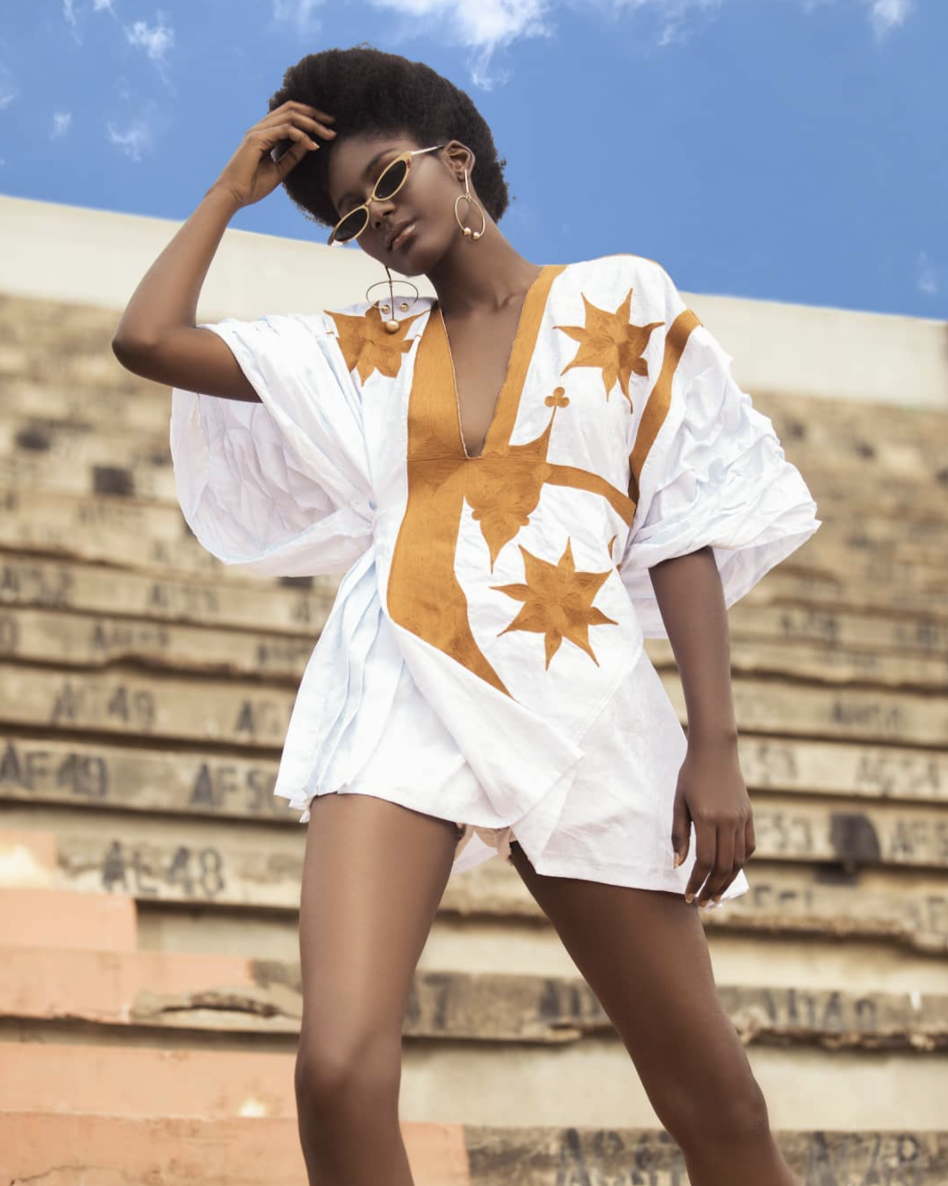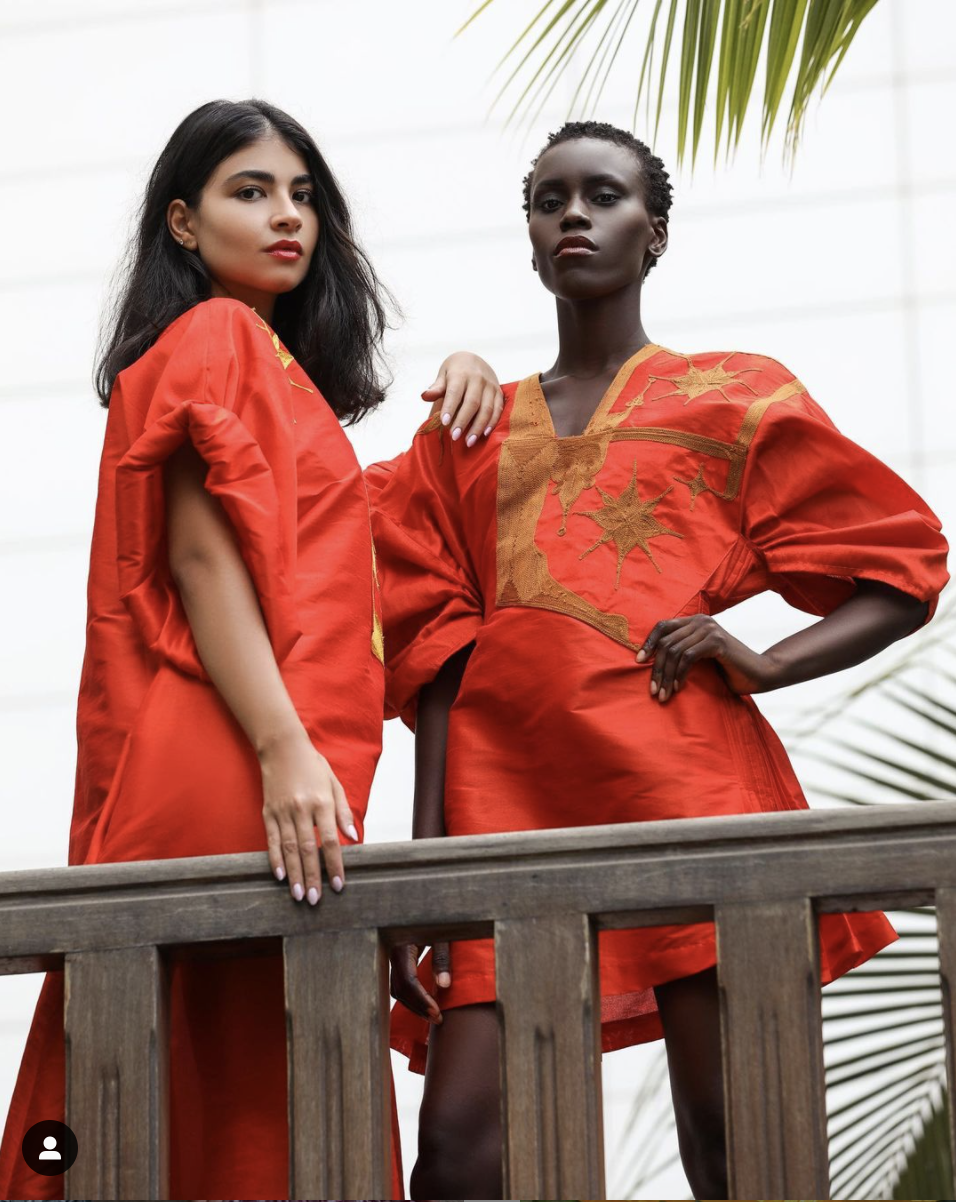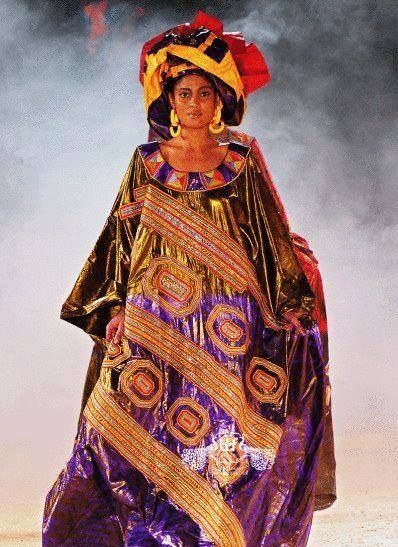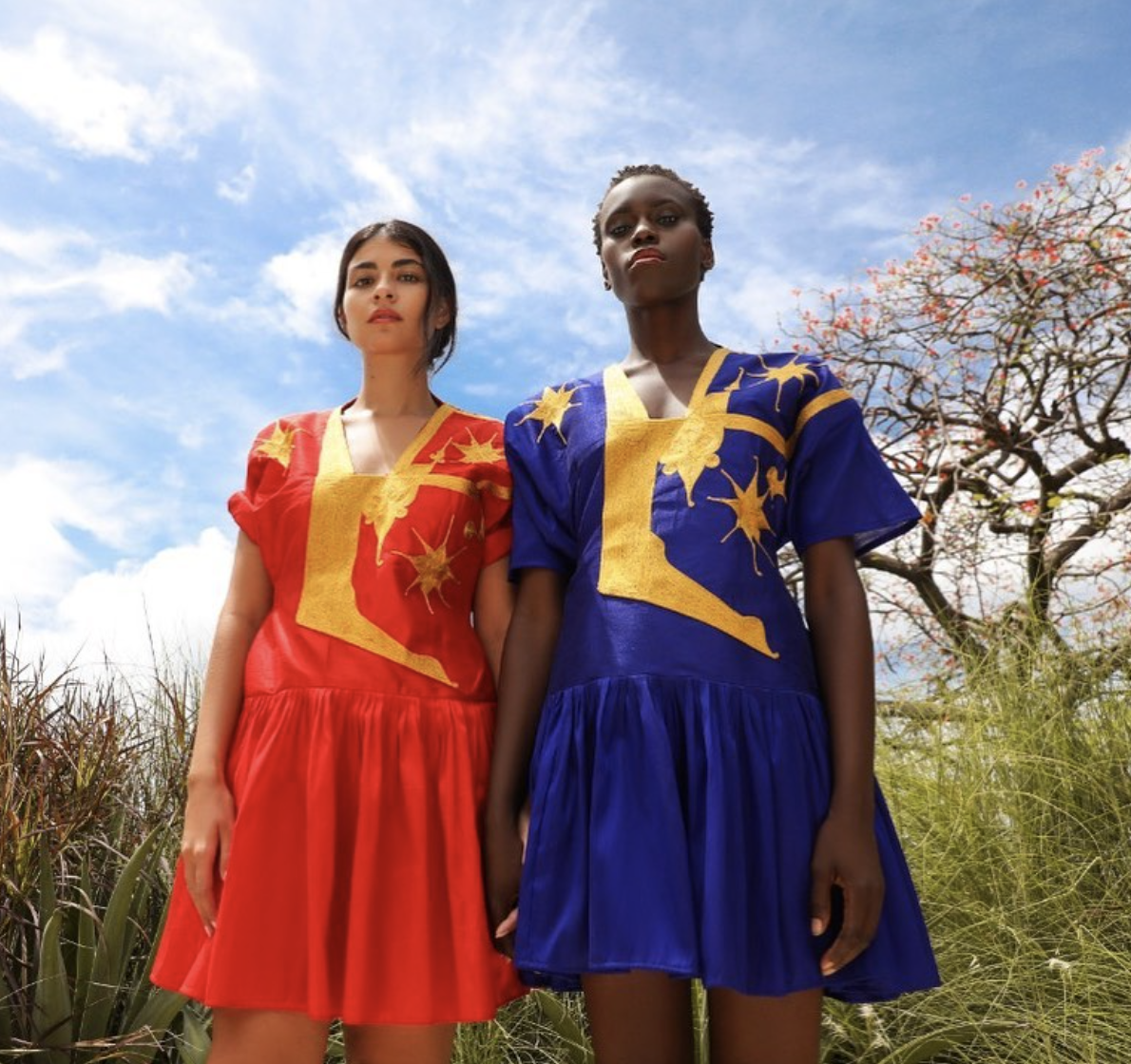Agbada & Boubou
Also known as the Agbbada (Igbo) or Babban Riga (Hausa), the Boubou (Wolof) is a large, rectangular, wide-sleeved robe that is layered over several clothes.
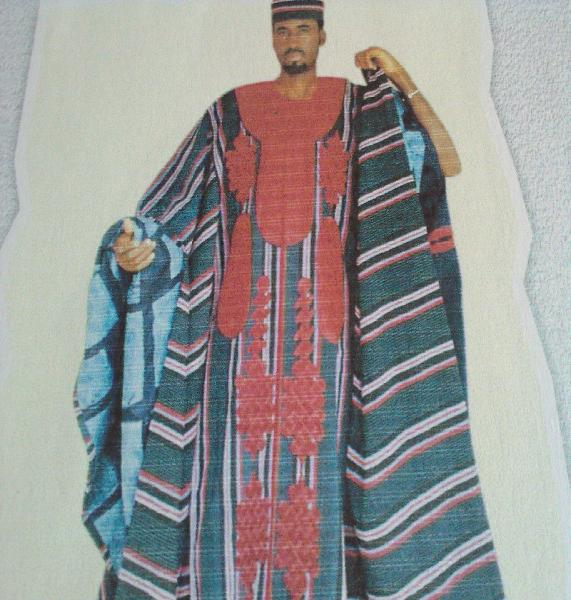
It has a neck hole at the top and a wide pocket on the side. It is most worn in West and North Africa, particularly in majority muslim countries.
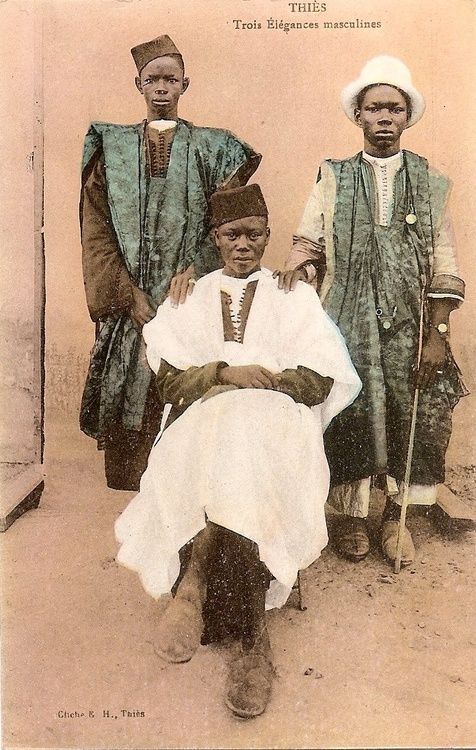
Postcard photo of 3 men in Thiés
It is usually made out of silk and is ornamented with intricate embroidery, oftentimes with Arabic calligraphy. While it is traditionally seen as a male outfit, it is also often worn by women as well.

Woman in green boubou
Historians trace the origin of this garment to Berber and Arab merchants from West Asia coming into North and West Africa, who brought with them, among other things, Islam and new modes of dress.

Lagos, 1877
This garment as a full suit also includes matching baggy trousers, a long sleeve shirt underneath, and an embroidered hat such as the asa oke or kufi. The agbada is associated with wealth and prestige. This full suit is intricate and labor-intensive to produce and was often worn on special occasions by royal and noble figures.

Portrait, Chief Solomon Osagie Alonge, Benin City, Nigeria)
Fabrication
The production process involves skilled textile artists, professional dyers and embroidery by religious scholars and artisans. The construction requires 2 to 4 long strips of cotton. The long length would have a triangle cut for the neck opening, with embroidery going along the edges from the neck to the chest area, and extending to the back. Most of the work is done by the draping around the shoulders, which gives the robe volume and movement.

